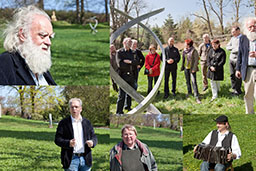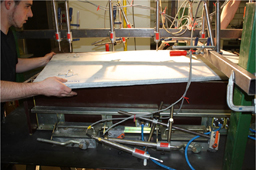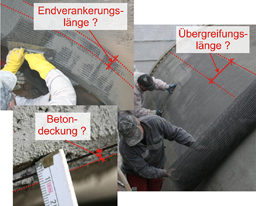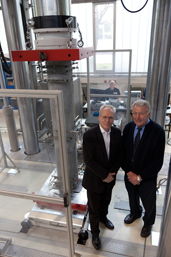
Prof. Zdenek Bazant
Im Rahmen der SFB528-Seminarreihe wird Prof. Zdenek Bazant (Northwestern University) am 21.07.10 um 11:10 Uhr im Willers-Bau, Zellescher Weg 12/14 (WIL/A317/H) einen Vortrag zum Thema Probabilistic Nano-Mechanics Based Theory of Quasibrittle Structure Strength, Lifetime and Fatigue halten.
Abstract: The size effect on structural strength and its statistical distribution is a complex problem for quasibrittle materials because their failure behavior transits from quasi-ductile at small sizes to brittle at large sizes. These are heterogeneous materials with brittle constituents in which the inhomogeneinty size is not negligible compared to the structure size. They are exemplified by concrete, as the archetypical example, fiber composites, coarse-grained ceramics, rocks, sea ice, wood, bone, foam, masonry etc., and all brittle materials at the micro- or nano-scale. The lecture begins by reviewing the statistical and energetic size effect on the mean strength of quasibrittle structures. Based on the frequency or probability of nano-crack jumps and multiscale transition to material scale, the type of probability distribution of structural strength is shown to depend on the structure size and geometry. On the scale of the representative volume element of material, the probability distribution of strength is found to be Gaussian, with a remote Weibullian tail. For increasing structure size, the Weibullian portion gradually spreads into the Gaussian core and, for very large sizes, the distribution becomes purely Weibullian. Presenting an atomistic derivation of the power law for creep crack growth, it is further shown that a similar change of distribution occurs for structure lifetime. Numerous experimental results and well as numerical simulations support the theory. One practical consequence is that the safety factors for large quasibrittle structures, e.g. concrete structures, airframes or ship hulls made of composites, and ceramic micro-devices, must depend on their size and shape. Another is that the lifetime can be predicted from tests of size effect on the mean short-time strength and of creep crack growth rate. The theory is also extended to the size dependence of Paris law and Basquin law for fatigue fracture and statistics of fatigue lifetime. An interesting mathematical analogy that facilitates assessment of lifetime of new nano-scale high-k dielectrics is pointed out. Finally, the implications for computer analysis of failure probability of large quasibrittle structures are pointed out.
BIO-SKETCH: Born and educated in Prague (Ph.D. 1963), Bažant joined Northwestern in 1969, where he has been W.P. Murphy Professor since 1990 and simultaneously McCormick Institute Professor since 2002, and Director of Center for Geomaterials (1981-87). He was inducted to National Academy of Sciences, National Academy of Engrg.and Am. Acad. of Arts & Aci., as well as Italian Nat. Acad. (dei Lincei), Austrian Acad. of Sciences, Czech Acad. of Engrg., Spanish Royal Acad. of Eng., Eur. Acad. of Sci. & Arts, and Istituto Lombardo. An ASCE Hon. Member and Illinois Registered Structural Engineer, he received six honorary doctorates (Prague, Karlsruhe, Colorado, Milan, Lyon, Vienna), ASCE von Karman, Newmark, Croes Medals and Lifetime Achievement Award, SES Prager Medal, ASME Timoshenko, Warner and Nadai Medals, RILEM L’Hermite Medal, Torroja Medal, etc. He authored six books: Scaling of Structural Strength, Inelastic Analysis, Fracture and Size Effect, Stability of Structures, Concrete at High Temperatures, and Concrete Creep. With H-index 52 and >13,600 citations, he is one of top 100 ISI Highly Cited Scientists in engineering (www.ISIhighlycited.com).


 Ab 10. April in Zuschendorf: Werke aus Textilbeton von Volker Mixsa
Ab 10. April in Zuschendorf: Werke aus Textilbeton von Volker Mixsa




 Das Buch zum Symposium
Das Buch zum Symposium




